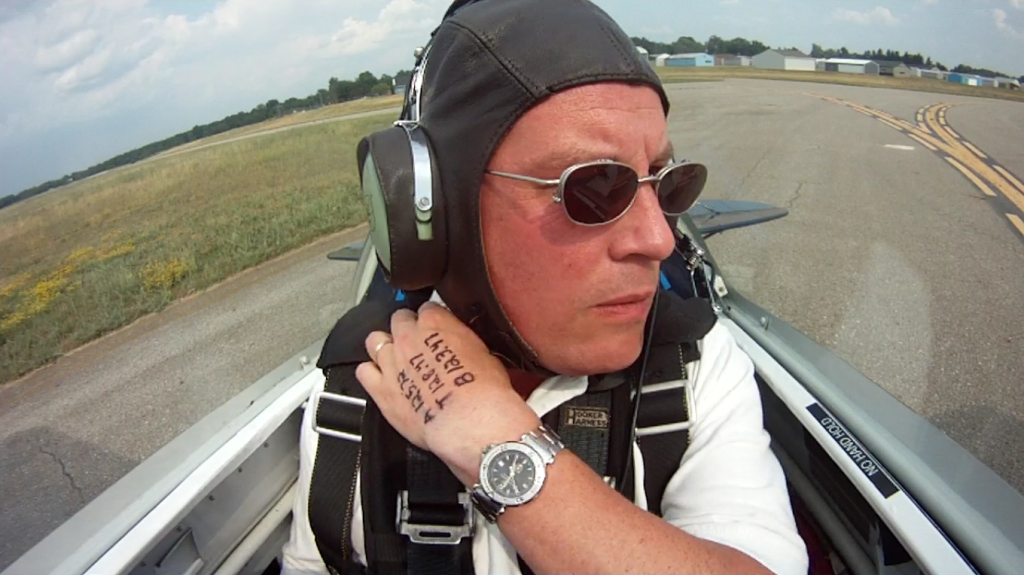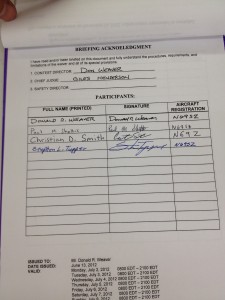A down day to get some work done for clients, do laundry, and snag a little sleep, and it’s back to it.
On Sunday, I left the Battle Creek airshow shortly after finishing my narration gig for the Tuskegee Airmen glider demo team. I picked up Don Weaver in Jackson and drove him to Ray and loaded up a care package for the Pitts. Don then flew the Pitts to Jackson and I headed home, where such laundry, work, and other more mundane activities ensued.
Fast forward to this morning, when I awoke at the Pi Pi Pi House (which is what we’ve dubbed this dorm at Spring Arbor University where many of us are staying). Off to Jackson County Reynolds Field, where the Pitts awaited.
I signed on to my second FAA waiver. As you’ll recall, the waiver is necessary to cover things like aerobatic maneuvering, fuel requirements, altitudes, and other matters. It essentially allows us to do stuff in Class D airspace that not even a retiring Lt Col on a fini flight would consider.
I realized that I couldn’t find my acro shoes. They’re actually just wrestling shoes and there isn’t anything special about them other than the fact that they’re narrower than my usual tennies and are less likely to snag when I move my feet up or down on the rudder pedals to use the brakes. I can feel the pedals a little better and wrap my toes around the turface features of the pedals, too, so that’s a plus. I had to hit Dunham’s to buy another pair, but was rewarded with a pair that fits even better than my old pair.
The flying was reasonably good. A couple of half-hour flights. The idea is to get my tummy settled down. As many of you know, I don’t really have the stomach for acro. I’m the dog who continues to chase cars even though I have little business doing so.
The first flight was all positive G with little or no roll. I can pull G all day long. It’s roll that messes with my head. So we flew loops and half Cubans for awhile. I’d been having issues with getting all wing-low on the float in the loop maneuvers anyway, mostly because I’m pulling the stick back and to the right. I’m now pulling straight back and that’s really helping. It’s always easier when you’re not trying to correct in the float when you see the horizon appear and start creeping down the glass all cock-eyed.
On the second flight, it was all about the reverse half Cubans. (Pull up to a 45, roll inverted, stick it there for a few potatoes, then pull over the last 5/8 of a loop. I had never flown a reverse half Cuban before, but managed to pull them off. The issue was figuring out what the float is supposed to look like and how long to hold it. I also needed a sight picture. I tried looking left to the sight gage, but, if you’re a guy who doesn’t like roll, you should not be rapidly turning your head left and back while inverted. It turns out that, if you can find a cloud as a reference, that’s best. If you can’t, you can try to use the horizon low and outside as a gage, assuming that your roll to inverted was true.
Toward the end of that flight, I had Don demonstrate a humpty-bump (the fifth maneuver in the 2012 sportsman). That’s a pull to the vertical with a half loop at the top. Very short upline (unlike the hammer) because you need the energy to get you up into the float for the half loop. We got a little slow up there, but made it over. I’m going to pull after only three potatoes or so in the upline.
Tomorrow, we hit the hammerhead hard. That’s the newest maneuver and the one I’m most concerned about getting right. If I can nail the hammer and the spin, I think that everything else will fall into place. (We’ll see how that process works out for me . . .)
Off to bed. Three flights to get in tomorrow!






